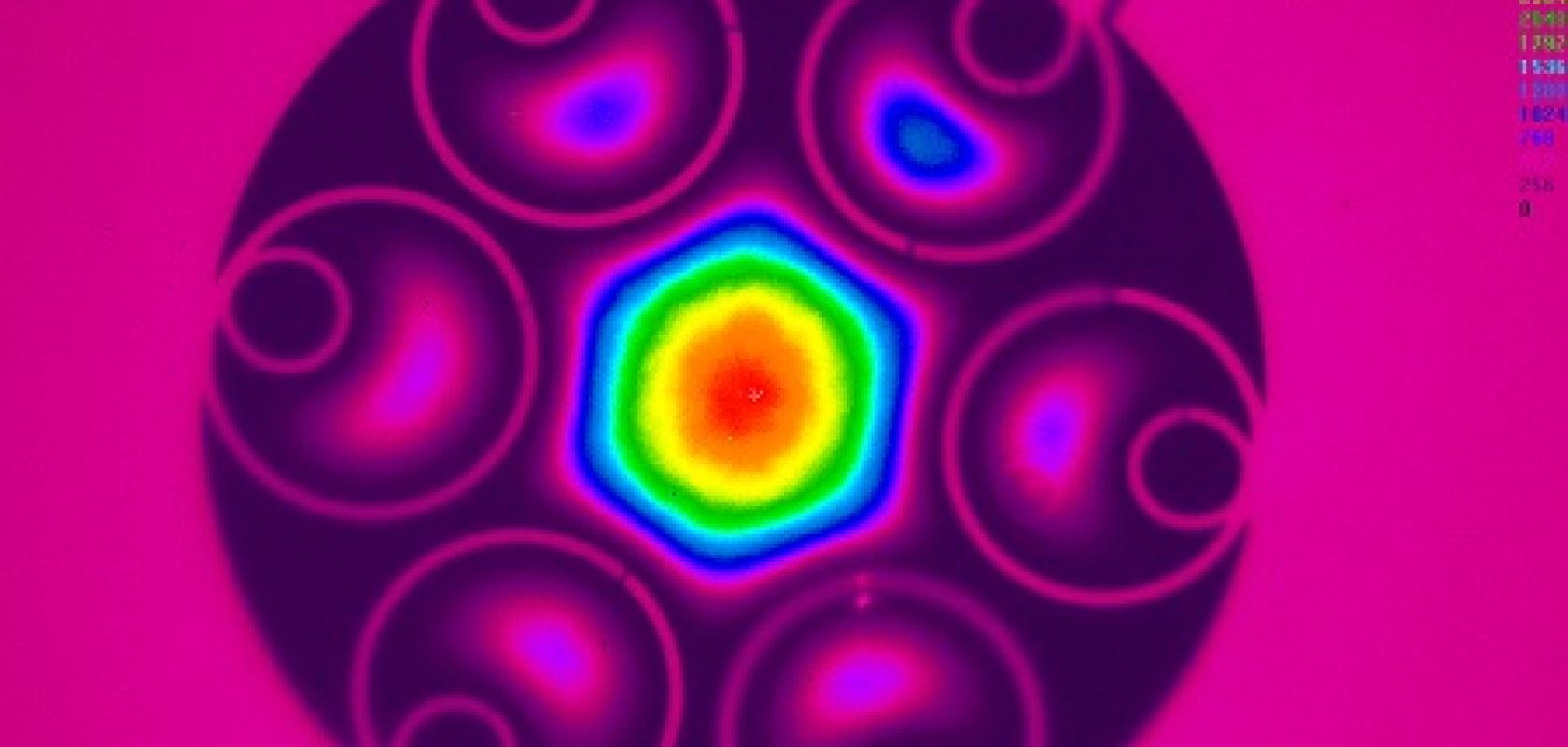Researchers at the University of Southampton’s Optoelectronic Research Centre (ORC) have developed a new type of hollow-core optical fibre (HCF) that exhibits the world’s lowest optical signal attenuation for a data-transmitting HCF.
The breakthrough, reported at the 2018 European Conference on Optical Communication (ECOC) in Rome this week, could herald the creation of larger and more distributed data centres, and more resilient and cost effective 5G networks.
Hollow-core fibres are optical fibres where the conventional glass in the core is replaced by a gas or vacuum. These fibres, with a ’holey’ centre, have attracted scientists worldwide for over a century owing to their faster light speed giving less information delay – an important attribute for data centres, 5G mobile communications and driverless vehicles. Remarkably, these fibres also have the potential for lower loss and higher data transmission capacity than the conventional all-solid glass optical fibres in use today.
Despite predictions however, the use of HCFs in optical communications has to date been severely limited by their relatively-high optical loss.
In the paper, ‘Record Low-Loss 1.3dB/km Data Transmitting Antiresonant Hollow-Core Fibre’ – a joint effort between the ORC through the European Research Council project ‘LightPipe’, and fibre optic developer Lumenisity – the researchers show how their new fibre design, known as a Nested Antiresonant Nodeless hollow-core Fibre (NANF), is able to exhibit a lower attenuation level than the previous record for a of 1.7dB/km, reported in 2004. In addition, simulations with the new fibre have predicted that NANF technology could offer future losses as low as, or better than, standard silica fibres.
‘This result represents a key first milestone in the practical development of a new HCF technology that is considerably easier to manufacture than previous generations,’ said the ORC Professor Francesco Poletti, who leads the team and the LightPipe programme. ‘NANF technology could enable breakthroughs in many areas of science and technology, from sensing to laser power delivery and data communications. A few months ago it was just a promising idea on a piece of paper, but with the help of the exceptional members of our team we already have this first experimental demonstration.
‘Furthermore, the experiments agree well with numerical simulations, giving us confidence in predictions that the capacity of the fibre could be increased by a further factor of two and the loss decreased by a factor of ten through design and fabrication improvements.’
NANF technology incorporates an arrangement of twelve carefully-positioned glass capillaries with a wall thickness of just one thousandth of a millimetre. These tubes surround an empty central region and create a hollow pipe in which the light is guided.
The researchers now plan to explore applications of the new technology in partnership with a range of academic and industrial project collaborators through the EPSRC-funded Airguide Photonics programme.
Image caption: Cross sectional photograph of a Nested Antiresonant Nodeless hollow-core Fibre (NANF) showing a mode being guided in the fibre. Image (ORC)
Related articles
Optoelectronics Research Centre to lead £6.1 million effort to develop next-gen optical fibres


